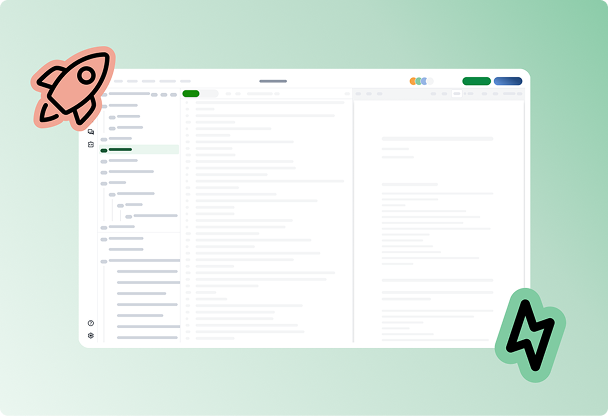Introducing Overleaf’s new look
November 19, 2025
We’re excited to announce that we're starting to roll out a new and improved design of the Overleaf editor.
From the beginning, Overleaf's goal has been to bring LaTeX to as many people as possible in an intuitive, user-friendly way. But over time, as we added more powerful features and integrations, our editor started to feel a bit crowded.
So, following extensive user feedback and testing, we've developed a cleaner, less cluttered interface that makes it easier to find and use the tools you need today, while making space for the new features you’ll love tomorrow.
We hope this redesign will ensure Overleaf remains the best place to write your research for years to come.
What's changed in the new editor design?
It’s still the Overleaf you know and love, just with a fresh new look and feel. In testing, our users were most excited about...
- The simpler, more modern design that helps you focus on what matters: your work
- The new left hand menu that conveniently groups key tools—like comments, track changes, project search, integrations, and more—in one place
- Clearer error logs that make it easier to find and fix what’s wrong, so you can get compiling again faster than ever
- Improved dark mode – plus the option to match Overleaf to your system’s setting
If you've been a user for a long time, you may have to reprogram your "Overleaf autopilot" slightly—but it should be a quick transition, and we hope the new design will make it easier to find and use the features you rely on the most.
Why have we made these changes?
Our primary goal was to simplify and speed up how our existing users work in Overleaf, in response to years of feedback on the old editor. But the new design brings two important additional benefits.
Firstly, the changes will help make Overleaf easier to use for a new generation of researchers and collaborators, and those who may be used to working predominantly in other word processing tools. By making Overleaf’s navigation and design more consistent with other document-writing tools, we're lowering the barrier to entry and expanding the pool of potential collaborators who can easily jump into a project with you–even if they’re new to LaTeX.
Secondly, this redesign creates the necessary space for us to build and integrate exciting new features and innovations (some of which we’ll start rolling out very soon!). We're constantly working on new ways to improve Overleaf, and this new layout gives us more room to grow.
When is the new design being rolled out?
You can try out the new design right now! Simply open a project and click the “Try the new editor design” button in the top toolbar to get started.

For a while, you’ll be able to switch back and forth between the old and new designs, allowing you to explore the new editor in your own time while we address any outstanding feedback or bugs.
Early in 2026, we'll permanently transition all users to the new editor design with no option to switch back. This is so our team doesn’t spend time maintaining two versions of the editor, freeing them up to focus on building new features and improvements for you. If you're still using the old editor when the final switch date approaches, you'll see reminders so you're not taken by surprise.
Share your feedback with us
As you start using the new editor design, we'd love to hear what you think. What do you love? What could be improved? Share your thoughts with support@overleaf.com and help us create an even better Overleaf for everyone.
We're extremely grateful to the many users who have already provided invaluable feedback during our extensive testing of the new design. If you'd like to help shape future Overleaf innovations, why not join our Labs program, where you can get your hands on in-development features before anyone else.